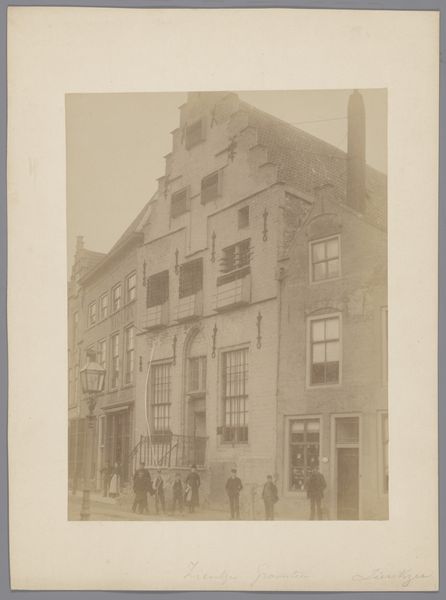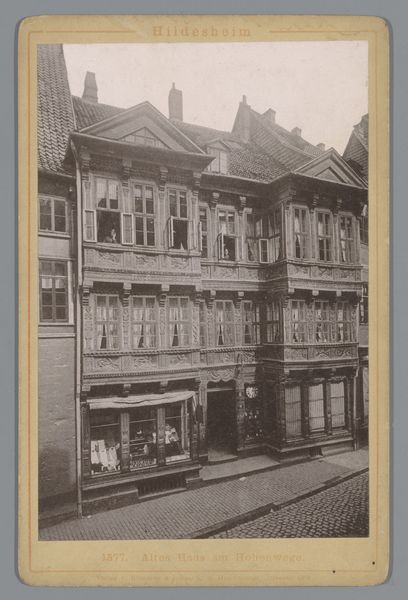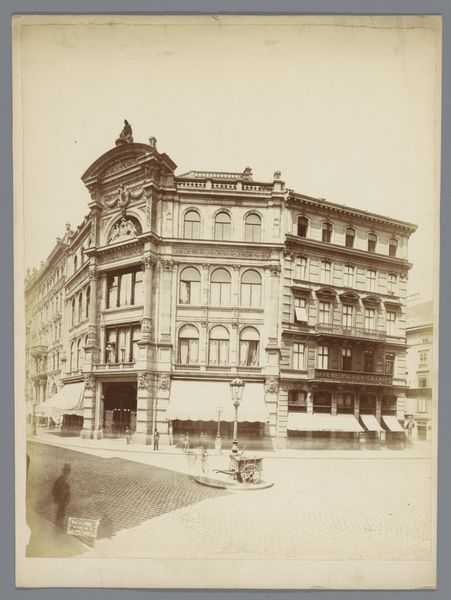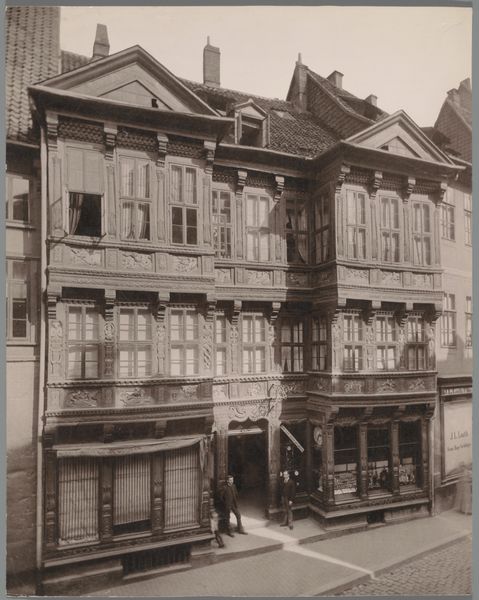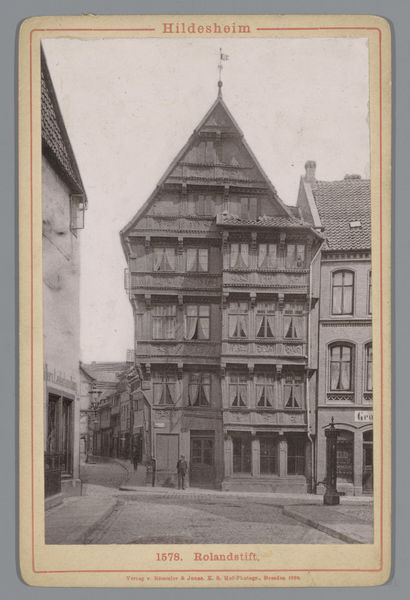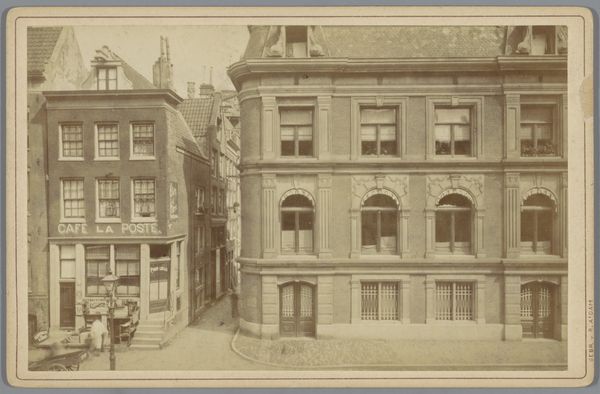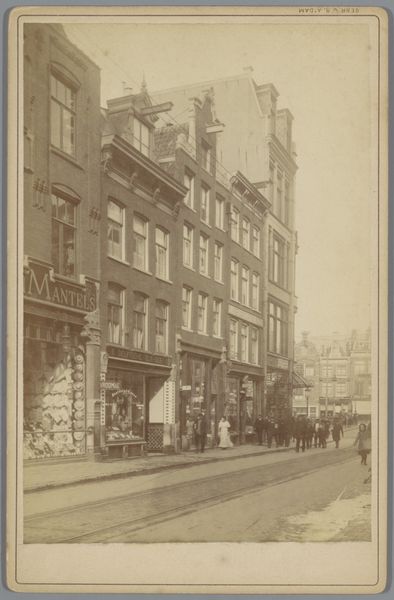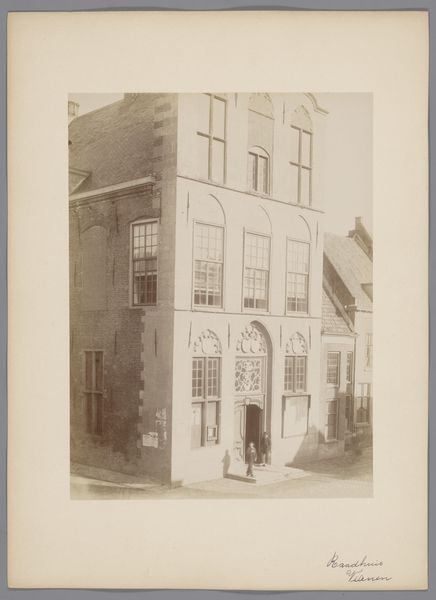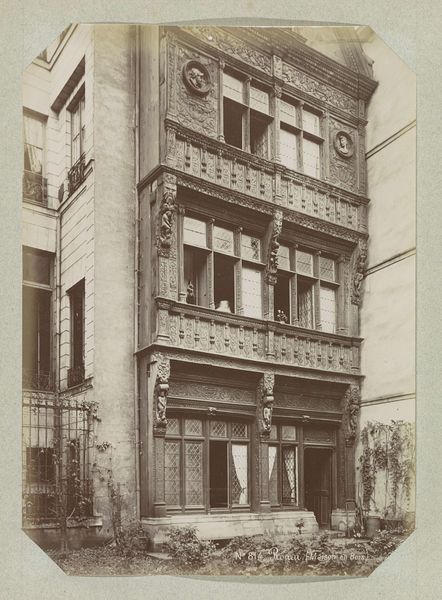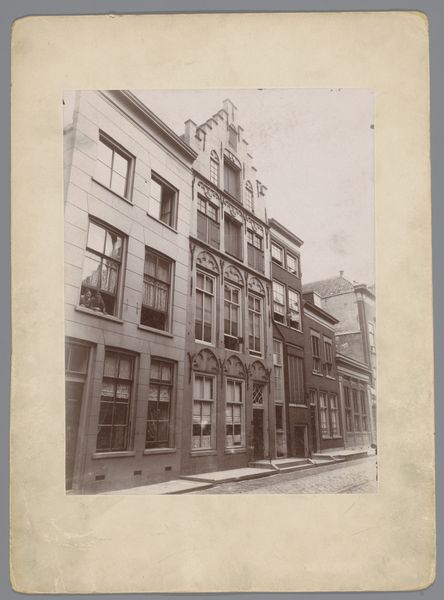
Gevel van een vakwerkhuis aan de Rue Malpalm te Rouen c. 1875 - 1900
0:00
0:00
print, daguerreotype, photography, albumen-print
#
16_19th-century
# print
#
daguerreotype
#
street-photography
#
photography
#
cityscape
#
street
#
albumen-print
#
building
Dimensions: height 344 mm, width 231 mm
Copyright: Rijks Museum: Open Domain
Curator: Ah, here’s a captivating albumen print for you. It's entitled “Facade of a Half-Timbered House on the Rue Malpalu in Rouen,” taken by Médéric Mieusement sometime between 1875 and 1900. A striking street scene. Editor: The sepia tones give it this incredibly dreamy, almost nostalgic atmosphere. It's like stepping into a historical novel. What gets me is how much the timbers of the building look like bones. They make a visible skeleton in this old, beautiful street. Curator: I see what you mean. It does convey a certain… vulnerability, perhaps. And look closely – you can see details like the shop displays on the ground floor and figures captured in the photographic process in the shadowy parts of the doorway. These streets are passages through time as well as place, if you let them be. Editor: Exactly. And that skeletal structure I see seems mirrored, right, with the implied skeletons passing through the doorways. Half of being human is coming and going, being built up and broken down. Tell me, what cultural memories might Mieusement have been trying to capture here? Curator: Considering the period, the rise of industrialisation, this may well be about memorialising a style of building and streetscape rapidly being replaced by modern structures. He's preserving an image of an older Rouen, laden with its own cultural heritage. This also might have some psychological weight, considering it may have reflected some turn-of-the-century anxieties toward a swiftly approaching future. Editor: That’s powerful, a lament for what's being lost, framed in architecture, with what will invariably be the passing crowds and occupants of the building inside of that frame as well. It really does feel like more than just a picture; it’s a loaded cultural symbol. I think a modern viewer may not give old architecture enough credit, but they need to see this. Curator: It makes you consider the impermanence of everything. Makes one value the everyday beauty. Editor: Precisely. It certainly does that for me.
Comments
No comments
Be the first to comment and join the conversation on the ultimate creative platform.
